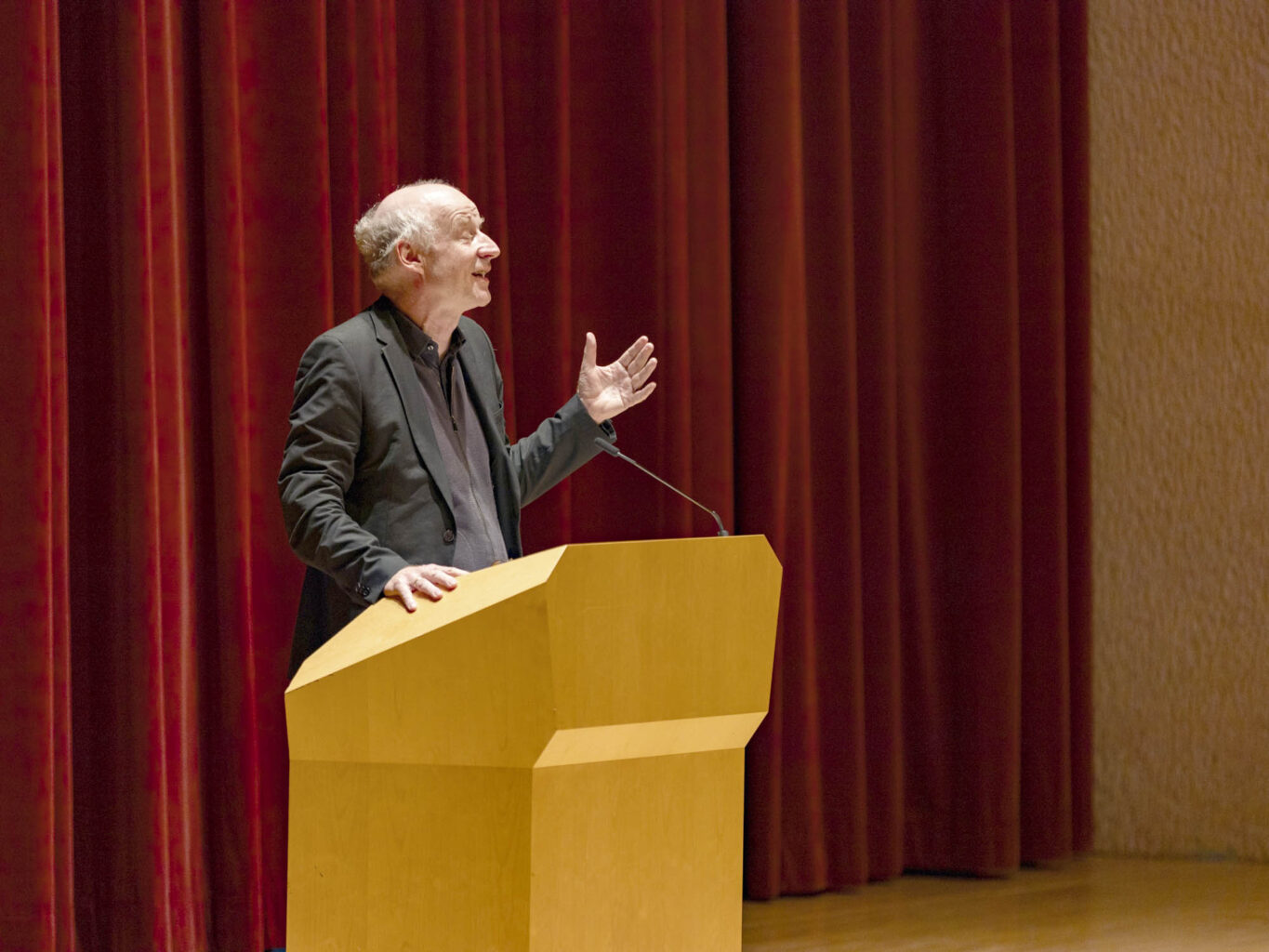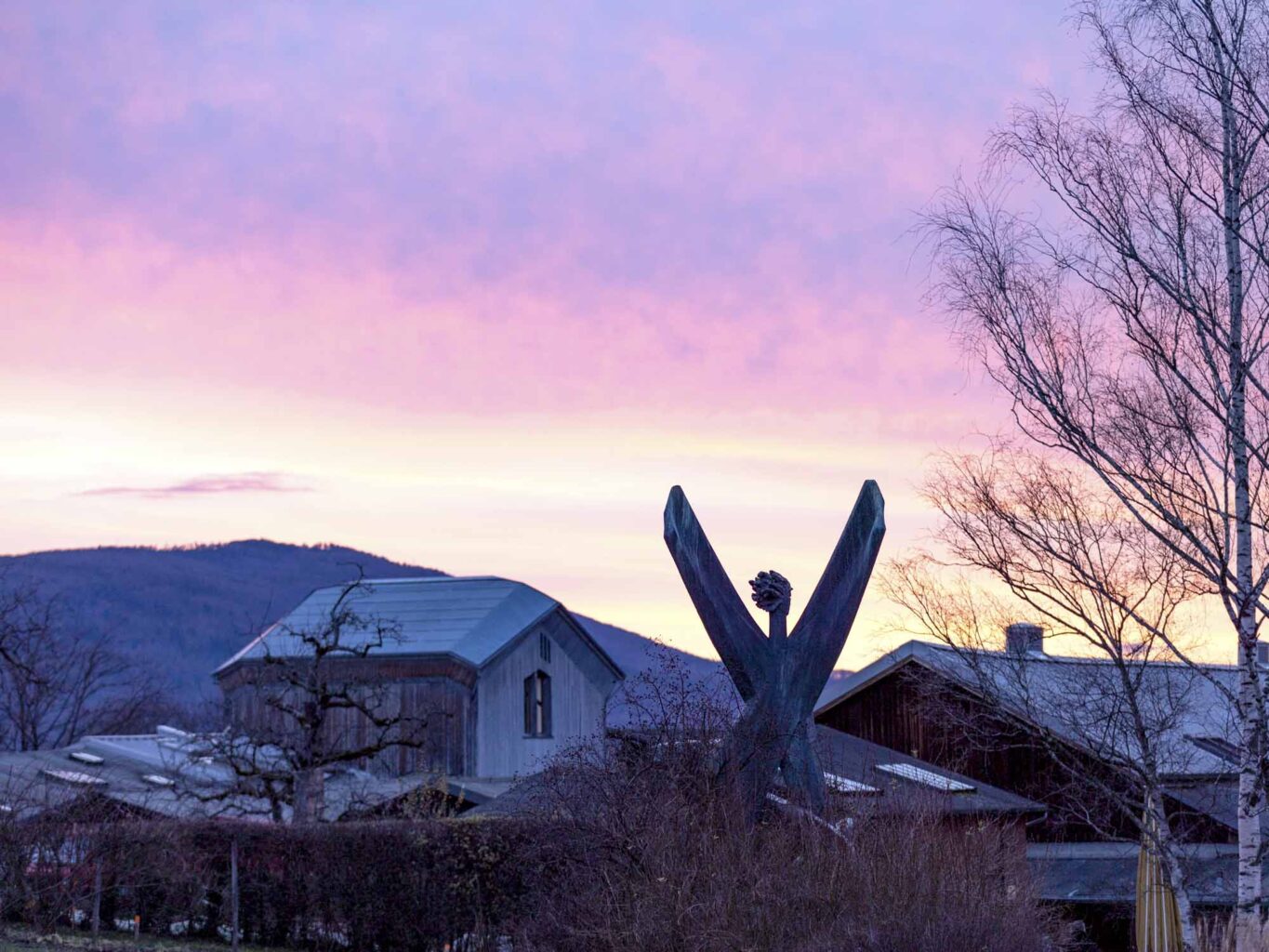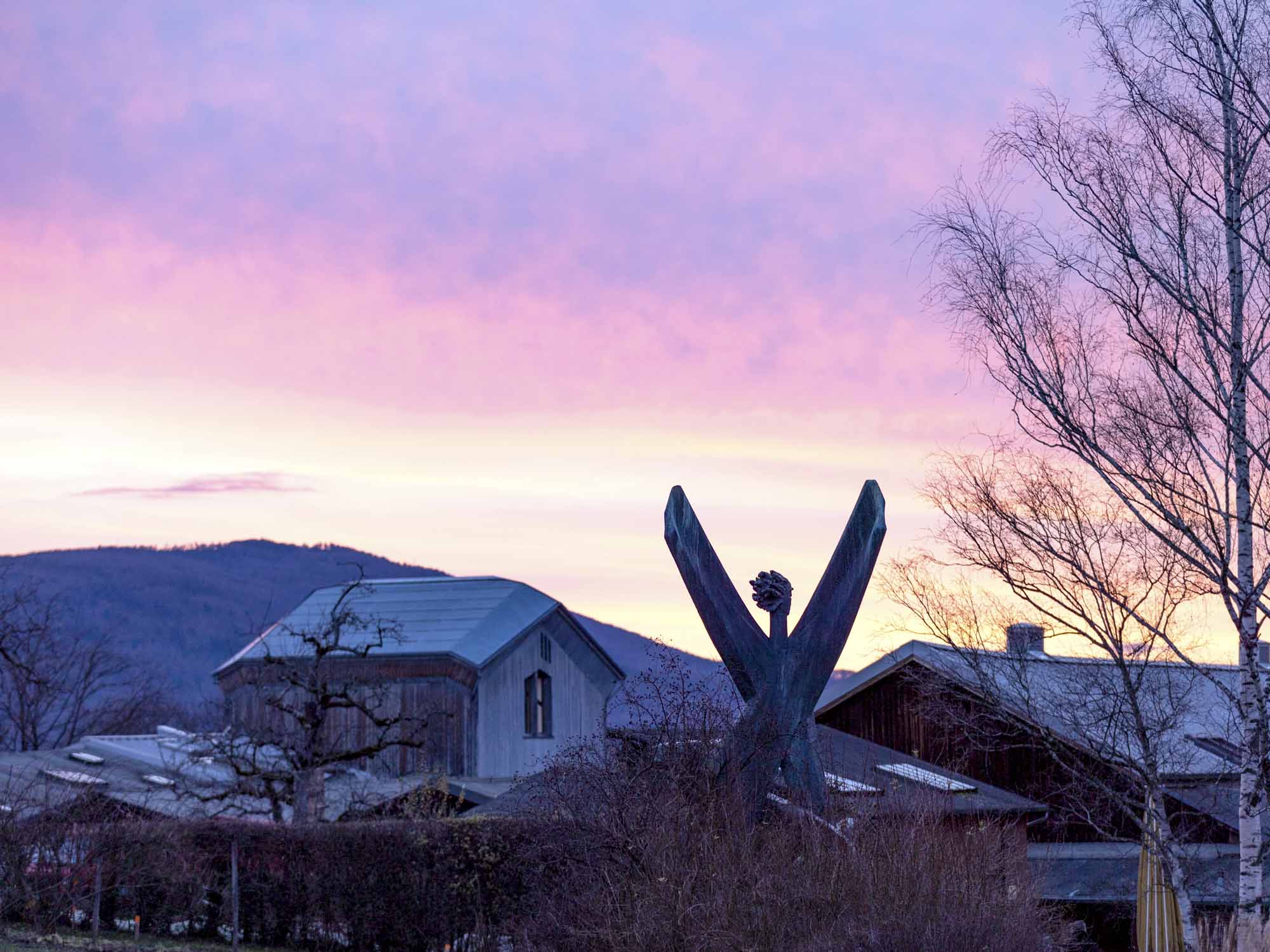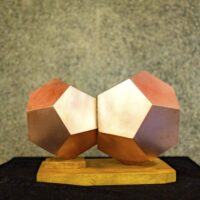Rudolf Steiner held the Christmas Conference as an encounter with and response to the dramatic events of the twentieth century. From our vantage point today, his intention is evident and is also a mission: to bring the impulse of that time into realization.
After the Christmas conference (this present one), if we raise the question of “The New,” I believe that the words of John apply: “But, the hour will come, and is already here” [John 4:23]. What I wish to say with that is, from my point of view, it would not be right to think that now, in 2024, we have to invent something completely new. For this “Beginning of a World Turning-Point,”1 which Rudolf Steiner spoke about at the Christmas Conference in 1923/24, had, indeed, begun and, in fact, was endowed through the Christmas Conference by the form of working between the School, the Society, and the Movement.
In my opinion, it is not at all easy for us to place ourselves back in the time of the Christmas Conference. For we have grown up within this vessel, within this arrangement. Rudolf Steiner endowed something for the future, not for himself. He did not establish a presidential order; rather, he made visible an arrangement concerning how Society, School, and Movement can work together and relate to each other. It has, indeed, often been said that many things did not turn out that way—many things also were not understood and, perhaps, could not be easily understood at that time, either. For, at that time, there was a lack of distance—like when we stand too close to a painting or a cliff face, and all we see are colors or stones. Michael Bauer once said, “We are not yet able to judge the greatness of Rudolf Steiner’s life’s work. We stand too close to it.” But, we now have seen the genocide of the twentieth century, which now lies in the past, and we can also see certain dangers much more clearly than the human beings of that time saw them. They still had the feeling that the World War lay behind them, and they often did not understand at all which abyss Rudolf Steiner was talking about.
Margarita Voloshina described this not-understanding honestly, as have others, and they often did not understand which school Steiner was actually talking about or what he meant with the Sections. For them, it was the school of the spirit, and the rest wasn’t really there yet. In Dornach, on the hill, stood the ruins of the fire. In Stuttgart, there was a school that was in a precarious financial position. The Stuttgart Clinic was liquidated in 1924. There was a small home for curative education in Jena, the “Lauenstein,” but the parents of the children closed the institution following the death of Rudolf Steiner since the teacher of the young curative educators had died. One had to assume that it is, or is coming to, the end. And that was, indeed, also the view of the opponents, that all had actually been defeated with Steiner’s death.
And then? Yes, then, within three years, arose this powerful, unique building. [The Goetheanum.] It arose purely out of the forces of those human beings who were inwardly connected with Rudolf Steiner and with the Christmas Conference mystery of birth, those who gathered together all their forces and inspiration to work for this future, around his spirit and purpose. This is not meant personally, necessarily, but rather in the sense of the spiritual world that became manifest through Rudolf Steiner.
And from out of one school, there are now more than a thousand. I know that it is not without problems when anthroposophists present general success stories with statistics. After all, we can see the concerns of these schools. And if you have children, you already know how difficult it is, at least in some countries, for a Waldorf school to really live up to its name. And still, they are there! Herbert Hahn, one of the first teachers in Stuttgart, once said (and I have never forgotten it), “If we succeed in preserving Waldorf schools beyond the end of the twentieth century, then it will be possible to lead them further and to deepen them.” Herbert Hahn had the consciousness that these would be difficult times and that it would first be a matter of getting through all this and carrying the impulse through (perhaps also, in a weakened form and with compromises) before perhaps a next phase of development would be possible through a new, helping spirituality.

The Goetheanum as A Heart
Now, I come to the Goetheanum and School, but I do not understand it to have come from Rudolf Steiner only as an esoteric school. Rudolf Steiner understood the esoteric schooling path as the foundation of all professional work. In this sense, the Sections are departments for specialist work. And for all human beings of the School who are collaborating in this work, this fundamental inner path is the basis, the foundation, but not the goal.
Recently, it was said that it is a bit like a heart organ suddenly becoming self-sufficient. The Class Lessons are a heart organ of a whole being; for limbs, it has agriculture, it has education and curative education, it has natural science, it has medicine, it has astronomy, it has art, it has social and religious life—this being has all the disciplines in its wholeness. The heart is that which perceives, promotes, and enables this work. I mean, in fact, the heart of all the School endeavors—so, the endeavor for research, teaching, education, and social cohesion in these fields—is the esoteric school with its First Class. And when we are present here at a professional conference, say, for agriculture, in the midst of seven hundred agriculturists and workers in this field, who bring the fruits of their work, but also their questions, their studies and challenges to the Goetheanum, then we are very much part of a living School. The human beings here at the Goetheanum present what it is like in their country, how far they have come today with the instructional course of Koberwitz, and what new ideas they have found from out of the course or from out of the encounter with their work. I would really say, imaginative, inspirational, and intuitive.
Indeed, these are not some airy abilities of extreme meditators but rather factual experiences of human beings who work concretely. Rudolf Steiner was a worker. He was born in a railroad station and died in a woodworking shop. He wished that anthroposophists would work for the world, for the becoming of the world. So, returning to this Goetheanum are human beings who belong to a Section, and they report on their work, on their results, one could also say, on their research. But, perhaps we don’t always have to say this; it is a lofty concept. They bring them together here. And, through the Goetheanum, the results of their work come into the world and perhaps—heard by the good gods—may be received favorably. Impulses come from here, from anthroposophy, and results, work, and experiences return. It is concentrated here and, thereby, the most valuable become accessible to all.
This is just one task of the Sections and by no means an unimportant one. It has to do with the social form of the School. That which becomes world—and the School is in the world—comes back to this Goetheanum as to a heart. By no means to just any place, but rather to here, to the place of the foundation stone, physically, soulfully, spiritually.
Human beings come here with love and expectation, indeed, also with a lot of hope, often from very far away, with great investment. And they hope not only to meet here and hear from one another but also to do this in the presence of the spirit of this place. They hope also to find here new viewpoints for their work. They do not hope to hear some dogmatic doctrine but rather to encounter the good spirit of the Goetheanum. This spirit is, of course, very much in the world, on the move, on its wanderings, in the sense of Hegel or Hölderlin, but it is here, too. It is impressive to speak with people who live far away and to see what love they have for the Goetheanum. And it is interesting to hear what they experience here, in the buildings, in the lectures, in the working groups, in conversations, or in the esoteric Class Lessons. To hear what new points of view they have found here, also in artistic performances here in the building. To hear what speaks to them here, what speaks to them in this place of destiny. And, of course, they also have hope for the human beings who work here (who have special possibilities to work in a place like this); since this is a site working for the preparation of a future spirituality, those who come here also hope that the concept of the Mysteries is not always used, because overuse is not advisable. There are also hidden treasure troves here, including a Rudolf Steiner Archive. This may seem to sound very historical and dated, but it is an incredible place to access a spiritual scientific work for coming cultural epochs.

“We Were All Standing”
So, human beings come here because they hope that here, from the Sections and co-workers, from out of the depths of this spiritual science, they will be able to receive access to something that was not previously approachable for them. Because those in other places live with other needs. This is a place of mutual assistance and support. I named agriculture, but we could also name medicine or the educational movement. We will soon have a large curative education and social therapy conference here. All these Sections could be named.
At this level, the School is very, very real—and all of this was only there in 1924 in a seed, barely visible, almost entirely in the realm of pure intention, the formation of the idea of spiritual science and the individual first foundations. Of course, we must say that we still want to make significant progress in the spiritualization of medicine, agriculture, art, and natural science. In my opinion, the “Beginning of a World Turning-Point” has surely begun. And I believe that if this event continues to gain in intensity and the picture of the School as a whole lights up again—also through the deepening of the esoteric schooling path, in its ongoing improvement and in its connection with the tasks of humanity—then it will become clear that, with the Christmas Conference, something great has begun, something new. Cultural epochs of the future are also contained within the Nineteen Lessons of the First Class. This is unfathomably deep, substantial material. This is a path. Up until now, we have only come to grasp a trace of it, and we must intensify this further. We want to bring to light the relationships between the spiritual path of the heart and the work in the limbs—in agriculture and education, medicine, and everywhere.
That was also Rudolf Steiner’s hope at the end of his life: that this work continues. I was in his studio with many of the conference participants, and we called to mind the situation at the end of his life. After one hundred years, we can now say: Oh yes, within only three years after his death, this building was erected, but today, one can connect a concept together with an Agricultural Section. This is now a reality for many thousands of human beings who work in this field. In this sense, I think we can see that something very important has been achieved, in full consciousness of the imperfection. And, I believe that we may also know that we are supported by Rudolf Steiner when we perceive this beginning and take it seriously—and continue this beginning.
At the same time, we know how endangered everything is. To experience the Goetheanum in Corona times—that was an experience: The giant building, almost without human beings; in principle, completely meaningless. If we hadn’t been allowed to travel again, what kind of Christmas Conference would there have been? We are endangered, in every respect. But this is only the twenty-first century. Nevertheless—and precisely because of this—we will continue our endeavours. And if we continue our work, then something can be erected. And then, we can trust in the encouragement, in the fidelity of the “Souls of the Gods,” as Rudolf Steiner said.2
Perhaps you recall how Rudolf Steiner was welcomed for his evening lecture on December 31, 1923, exactly one hundred years ago, in the hall of the carpentry workshop. The people stood as he came in because it was the anniversary of the fire—they knew how difficult this day was for him—with the memory and the destruction one year previous rising up in their souls. Then Steiner delivered an incredible lecture, and, at the end, he said: you have welcomed me standing—and asked them to stand up again. What followed was a kind of promise or a pledge—that the human beings would hold true to the spirit of the Goetheanum in the future. I once asked the elderly eurythmist Maria Jenny, who had done eurythmy at the Christmas Conference as a teenager and was present at the evening lecture on December 31, 1923: How was it at that moment? And she said: “Quite simple. But, we were all standing there.”
So today, they also still stand, I think, these protective spirits, who now are all in the realm of the heavens, and they hope that we will hold true to this place and lead it further into the open future. That we do what is possible for us and that we creatively conquer what comes upon us. That is, indeed, the secret of the future: that much will come upon us that we cannot foresee.
Translation Joshua Kelberman





